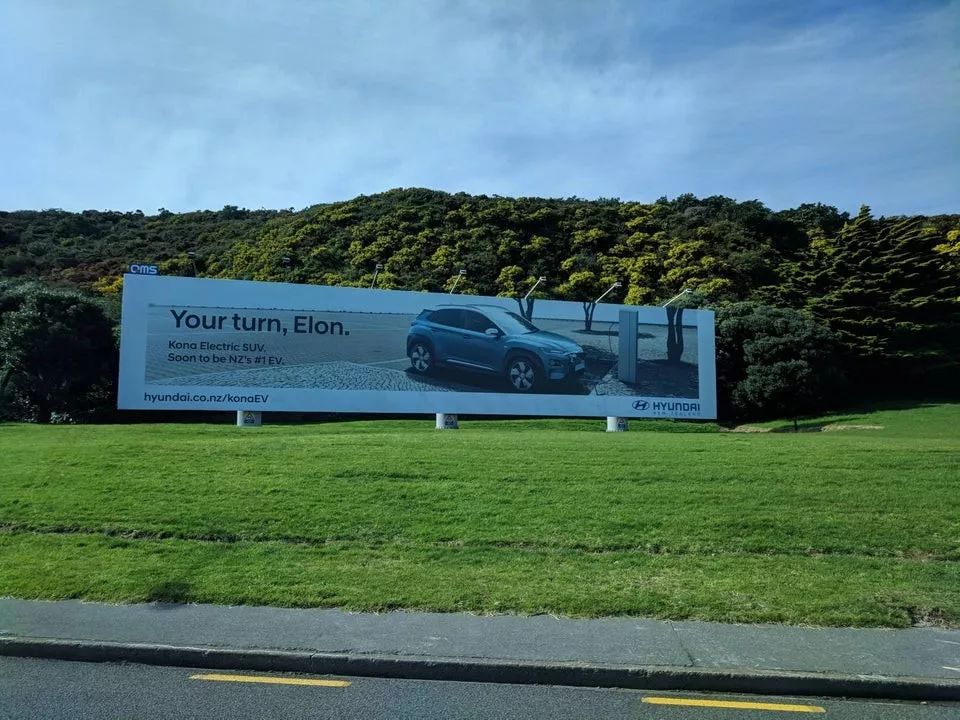Tesla’s Marketing Dilemma in the Luxury EV Market
Tesla has a relatively limited budget for traditional marketing, but as the leader in the intelligent electric vehicle industry, it is inevitable to experience a situation similar to the iPhone in the smartphone market: repeatedly challenged by companies other than Apple and Tesla, resulting in constant setbacks.
Various traditional automakers have come up with different marketing plans targeting Tesla, some with brilliant ideas while others might make you question whether the efforts put in are truly effective.
“Our analysis shows that the declining sales of Model S and Model X are mainly due to competition, especially in Europe, from Jaguar and Audi. The introduction of electric car products from Mercedes-Benz and Porsche will make this problem more severe,” said Toni Sacconaghi, a senior technology analyst at Bernstein, and a popular Tesla analyst who frequently appears on Tesla’s earnings conference calls, on the luxury electric car market.
Is this really the case?
In fact, Audi and Jaguar’s marketing teams have come up with many strategies that closely follow Tesla’s models to attract new customers. Let’s take a look at Audi first.
In June 2017, Audi launched an outdoor advertisement that reads “Musk-Have,” which is a pun on the English term “Must-Have,” implying that the Audi e-tron Sportback all-electric SUV is a vehicle that everyone must have and cannot miss out on.

The background of this ad is that Tesla CEO Elon Musk owned an Audi Q7 before the Model X went into mass production. This double entendre wordplay in the ad is quite a good marketing idea. The only issue is whether it’s necessary to promote the e-tron Sportback, which is planned to launch in 2019, two years in advance.
Plus, due to the delay of the production plan for the first generation of pure electric e-tron vehicles, the e-tron Sportback may not be put into mass production until 2020.
Talking about e-tron itself, Audi’s marketing plan is not as elegant.
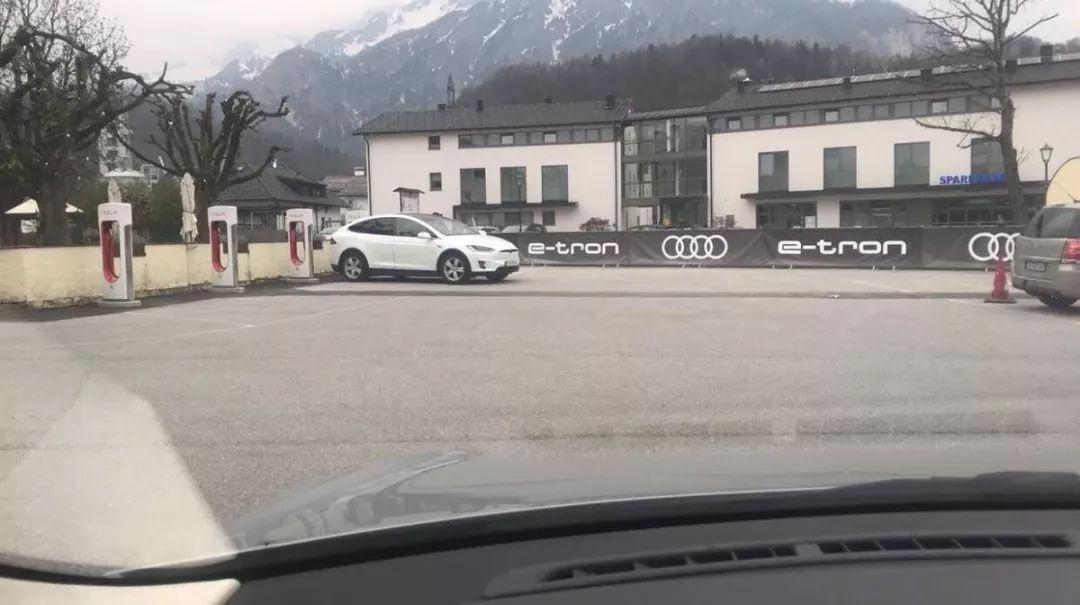
Audi and Jaguar’s Promotions for Tesla Owners
In July 2019, Audi placed ads for its e-tron vehicles around some of Tesla’s Supercharger stations in Europe, and offered Tesla owners a two-day or 1,000 km free trial of the e-tron alongside the charging stations. If desired, professional photographers would accompany the trial and collect user feedback.
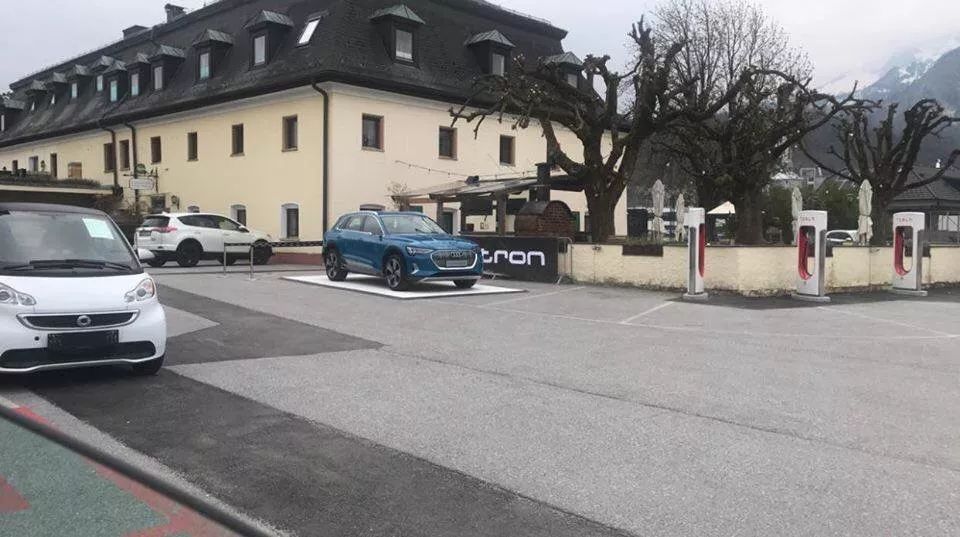
Perhaps due to insufficient enthusiasm from Tesla owners attempting to charge their vehicles, Audi took a more provocative approach, parking e-tron vehicles directly in Tesla Supercharger parking spots.
Without a doubt, this approach attracted more attention from vehicle owners, as they had no way to charge their Teslas while the e-tron occupied the charging spot.
However, this step met with a mostly negative response. According to an online poll, less than 16% of participants believed Audi was clever, with over 50% calling Audi foolish. I think it is safe to assume that some significant portion of those polled were Tesla owners, as they were the only ones to experience the frustration of having charging spots taken.

Now let’s talk about Jaguar. As we know, the Jaguar I-PACE has had a difficult time in the United States. What did Jaguar do? Their American marketing team planned a confusing sales promotion.
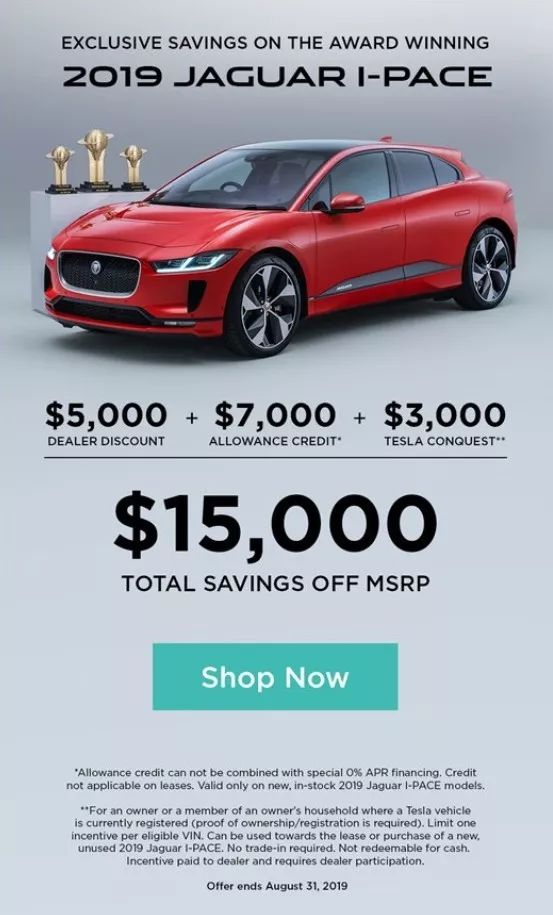
If you are a Tesla owner, purchasing a Jaguar I-PACE will earn you an extra $3,000 discount. That’s it. Just because you are a special Tesla owner.
How do you evaluate this activity? How would BMW i3, Nissan Leaf, Chevrolet Bolt, or Toyota Prius owners evaluate it?
You might argue that these brands cannot be compared to Jaguar, and that Tesla is the only luxury brand comparable to Jaguar. Okay, maybe Jaguar really thinks so, as evidenced by their attempts to compare the I-PACE to the entry-level Model X when it first launched.
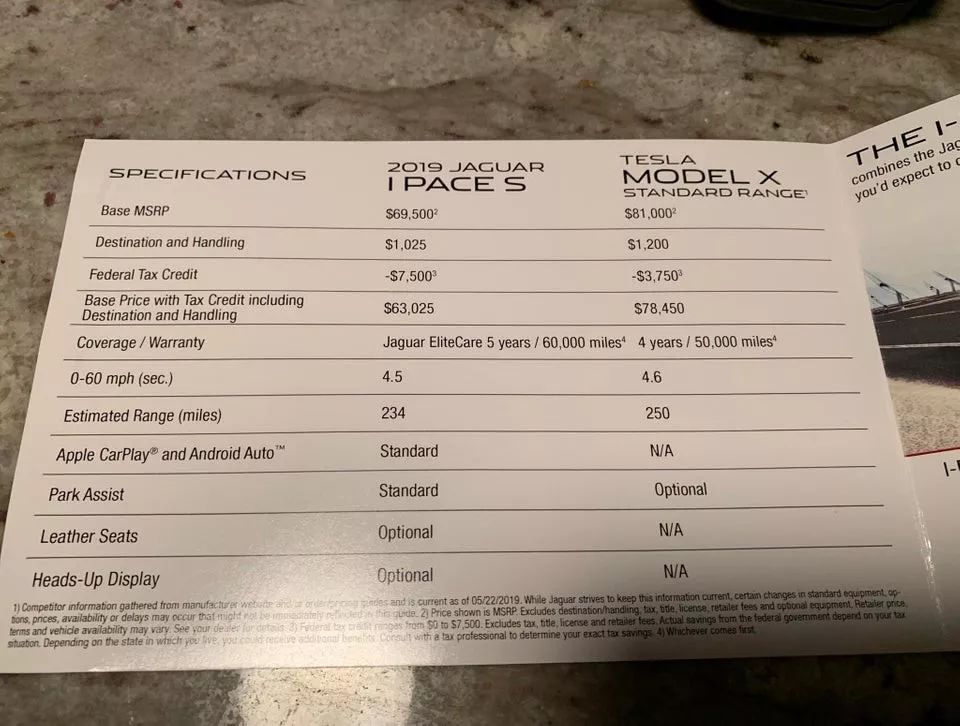 The problem is that with a $3000 discount, a $7000 subsidy and a $5000 dealer discount, the entry-level price of the Jaguar I-PACE will drop from $69,500 to $54,500. The Model X entry-level price has risen to $84,990 after the standard range model was discontinued, while the Model Y Performance, priced at $61,000, is now closer to the I-PACE.
The problem is that with a $3000 discount, a $7000 subsidy and a $5000 dealer discount, the entry-level price of the Jaguar I-PACE will drop from $69,500 to $54,500. The Model X entry-level price has risen to $84,990 after the standard range model was discontinued, while the Model Y Performance, priced at $61,000, is now closer to the I-PACE.
In other words, thanks to Jaguar’s promotion, its competitors have gone from the Model X all the way to the Model Y. The Model Y has yet to go into production, so let’s hope Jaguar can take advantage of this gap.
In addition to the I-PACE, another compact pure electric SUV has also made a big fuss around Tesla.
In August 2018, Kona, a pure electric SUV owned by South Korean automaker Hyundai, was introduced to the market. Hyundai’s marketing team is similar to Audi’s in that they didn’t target Tesla directly, but named Elon directly.
Your turn, Elon.
It’s your turn, Elon.
If you look closely, there’s also a note below: Kona electric SUV will soon become the top electric car in the NZ market.
Here NZ refers to New Zealand. In terms of specifications, Kona is targeting the Model Y, but considering the lack of competition in the electric car market, Kona and Model 3 are barely competitors. This is where Hyundai’s cleverness comes in.
(Image 1)
(Image 2)
(Image 3)This massive wave of promotion took place around August 2018. Due to the special characteristics of the right-hand drive market in New Zealand, Tesla Model 3 was not available for reservation until May 31, 2019. From Kona’s launch to Model 3 delivery, and with the help of Elon’s support, Kona became the first pure electric vehicle in New Zealand’s market.
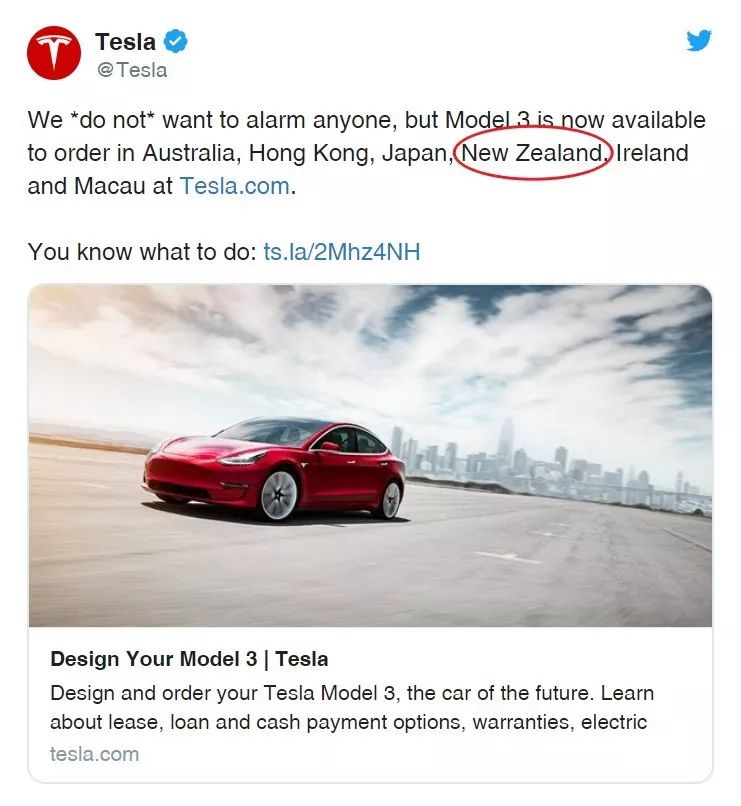
You may wonder, is it all about Model X and Elon himself? What about Model 3? Don’t be impatient. Let’s take a look at BMW, Nissan, and General Motors.
Many people have forgotten how amazing the start of the Model 3 was. On March 31, 2016, Tesla released the Model 3. 24 hours later, more than 115,000 orders had been taken. Three months later, 500,000 orders had accumulated. Many marketing plans were aimed at these 500,000 orders.
Let’s start with General Motors. Just two weeks after Tesla released the Model 3, on April 13, 2016, and after earning $325 million in deposits, Dan Nicholson, Vice President of Global Propulsion System at General Motors, publicly stated, “I’m proud to say that Chevrolet Bolt EV will be the first long-range, affordable electric vehicle in the world. It will have a range of over 200 miles and it will be available in late 2016.” He then dissed Tesla by saying, “You don’t have to put down $1,000 and wait until 2018 or whenever. General Motors’ balance sheet is in good shape, so we don’t need to take your $1,000 early.”
Elon is not a man to be trifled with either. At Tesla’s shareholder meeting in 2016, he officially dissed back: “GM shouldn’t (proclaim a) 20-30,000 production year capacity for the Bolt. They should truly aim for 300-400k in order to make it meaningful.”
Clearly, the demand for the Bolt in the automotive market is not as strong as it is for the Model 3. Elon’s mockery of General Motors triggered a new round of counter-marketing for General Motors.
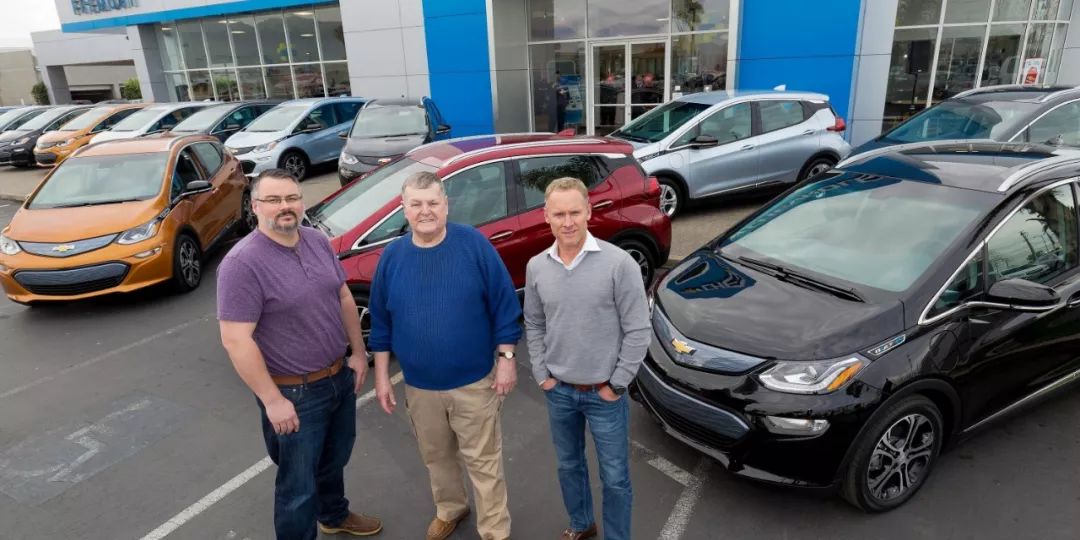 In December 2016, when Model 3 was not yet in production, General Motors specifically delivered the first three Bolts to a 4S dealership in Fremont, just three miles away from Tesla’s factory.
In December 2016, when Model 3 was not yet in production, General Motors specifically delivered the first three Bolts to a 4S dealership in Fremont, just three miles away from Tesla’s factory.
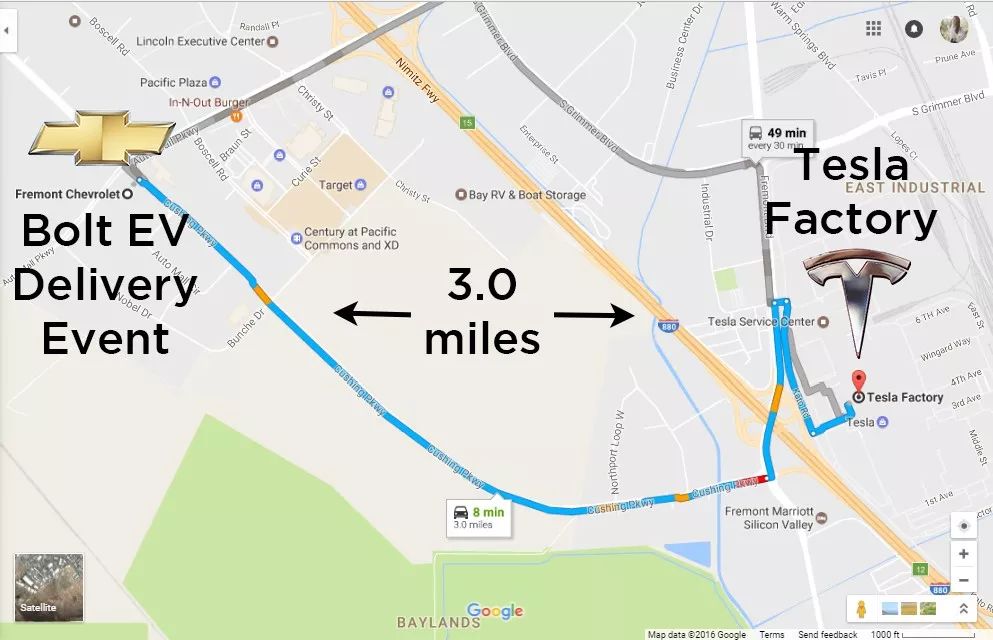
Nissan’s Leaf ad came a little later than Bolt’s. On April 22, 2016, Nissan launched a focused ad campaign on Model 3 in the《New York Times》,《Los Angeles Times》,《USA Today》, and《The Wall Street Journal》.
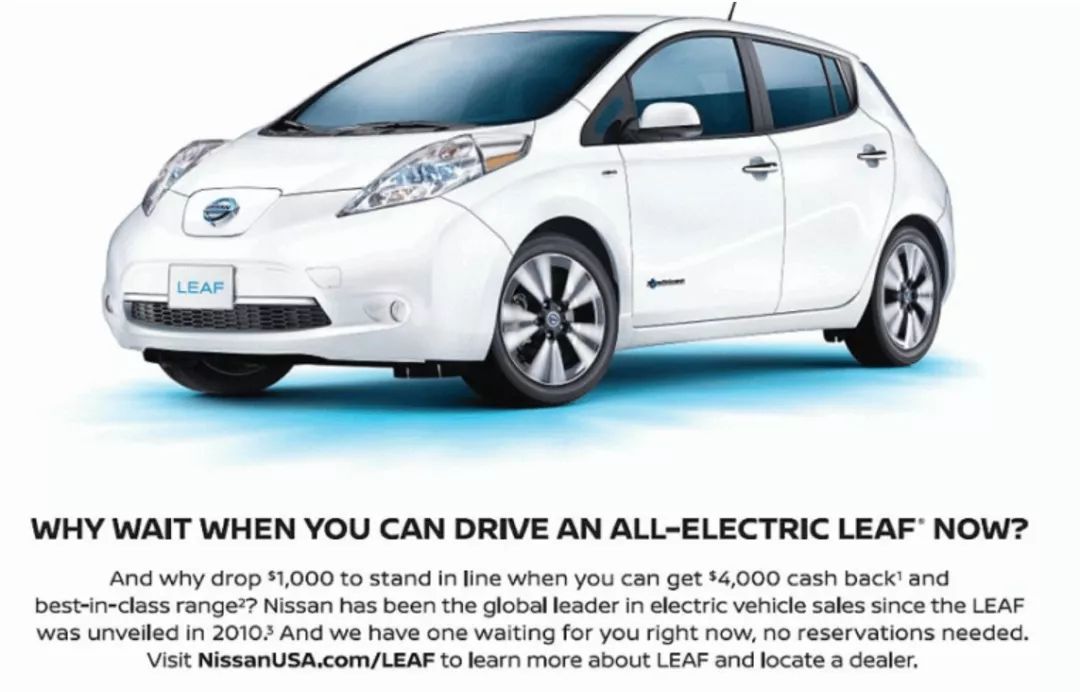
You can now drive away in a pure electric Leaf. What are you waiting for?
In the note below, Nissan continues to ask: when you can get $4,000 in cash back and the best product of the same level, why pay $1,000 deposit to wait in line?
What is the background of this campaign? After Nissan’s Leaf sales in 2015 fell by 43% compared to the previous year, they dropped another 28% in Q1 of 2016. Just as Nissan thought the pure electric vehicle market was continuing to shrink and was doomed, Model 3 suddenly appeared and received over 100,000 orders in 24 hours. If you were Nissan, you would be upset too.
Now let’s talk about BMW. BMW is quite interesting – they are not using BMW i3 to compete with Model 3, but closer to Model 3’s competitive series, BMW 330e hybrid series.
The video presentation is relatively restrained, not as exaggerated as Audi e-tron. However, as the best car manufacturing advertisement agency on Earth, compared to a series of impressive works in its history, BMW’s 330e PK Model 3 series can only be regarded as average.
In fact, before Model 3, BMW and Tesla had previous encounters. At the 2016 Frankfurt Motor Show, a month before Model 3’s launch, former BMW chairman Harald Kruger sat in a Tesla Model X to experience it. Unfortunately, Tesla’s European sales director Jochen Rudat was sitting to his left, accepting media interviews.Kruger was recognized by the media and hurriedly pressed the door opener to leave, saying: “(Model X) was really only a prototype and not a production car.” Embarrassingly, Tesla officially delivered the Model X in September 2015, and the one at the Frankfurt Motor Show was a production car. Finally, let’s summarise. On January 31, 2019, Elon tweeted:
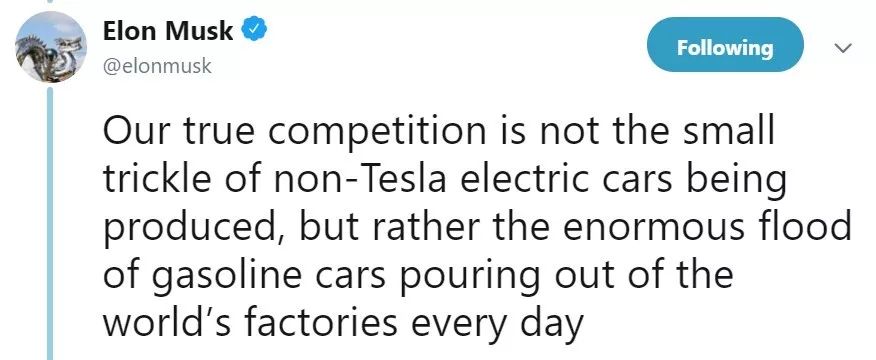
Tesla’s true competition is not the small trickle of non-Tesla electric cars being produced, but rather the enormous flood of gasoline cars pouring out of the world’s factories every day.
This statement represents Tesla’s basic attitude towards other electric cars. Regrettably, other automakers do not see the pure electric car market as a significantly growing market. They unanimously target Tesla to grab market share.
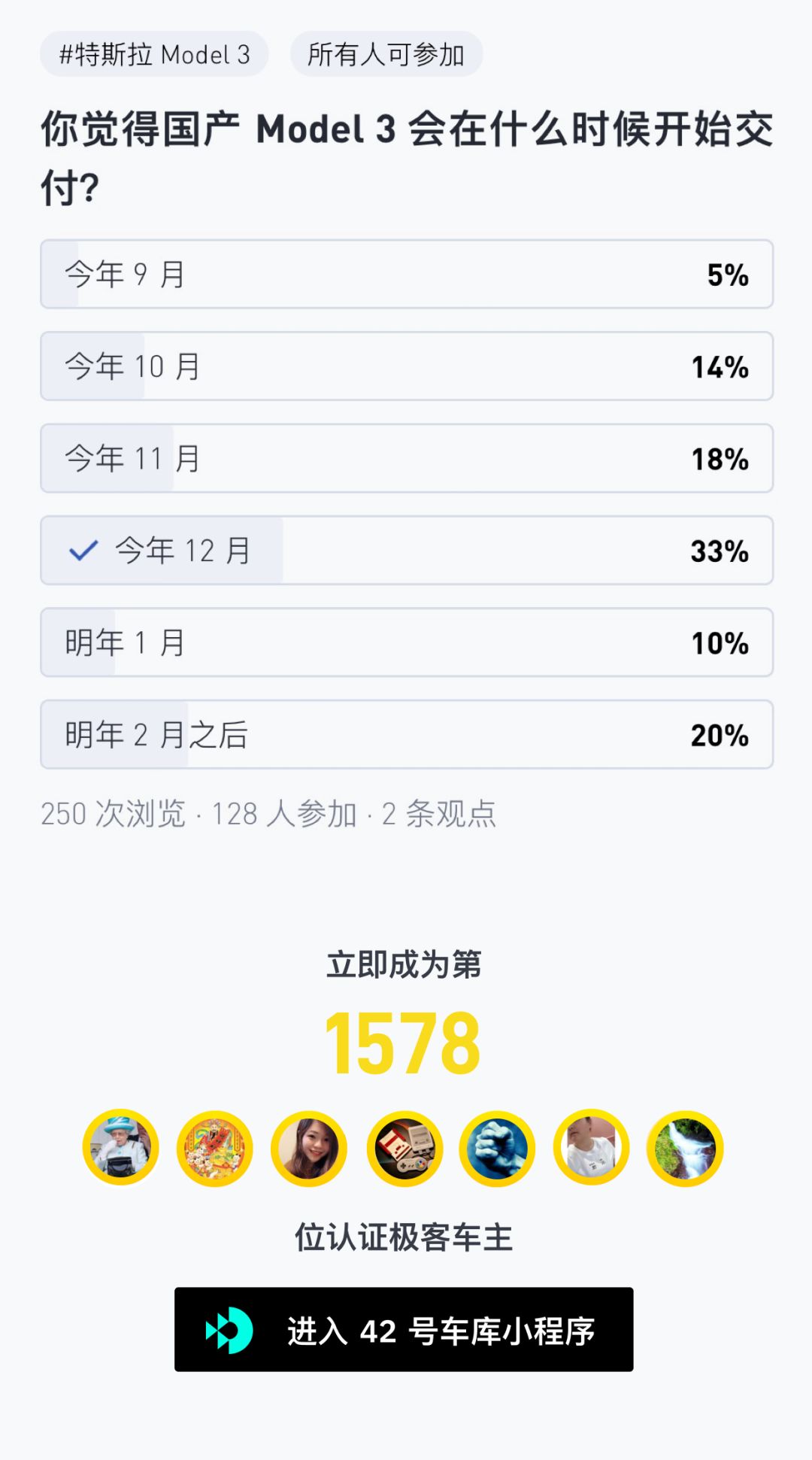


This article is a translation by ChatGPT of a Chinese report from 42HOW. If you have any questions about it, please email bd@42how.com.
